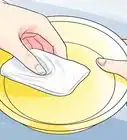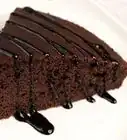This article was co-authored by Abyssinia Campbell. Abyssinia Campbell is an Executive Chef and the Owner of Chef Abyssinia, Personal Chef and Catering. With over ten years of experience, she specializes in catering, event planning, menu development, meal planning, and food business operations. When it comes to cooking, Chef Abyssinia enjoys using fruits, vegetables, healthy food alternatives, and local farm-fresh ingredients. She holds a BASc in Culinary Arts and Food Service Management from Johnson and Wales University.
There are 7 references cited in this article, which can be found at the bottom of the page.
wikiHow marks an article as reader-approved once it receives enough positive feedback. In this case, 89% of readers who voted found the article helpful, earning it our reader-approved status.
This article has been viewed 307,702 times.
Non-stick pans are great for a quick clean up in the kitchen, but their non-stick quality can slowly deteriorate over time, especially if they are not cleaned and handled correctly. Scratches or stains to the surface of the non-stick coating makes the pans sticker and less effective, which can be frustrating if you splurged on a fancy pan. Luckily, you can revive sticky pans by cleaning and “seasoning” them with oil to fill in the scratches and reinforce their non-stick coating. Seasoning your non-stick pan is a quick and simple process that is far cheaper than buying a new replacement pan.
Steps
Deep Cleaning a Non-Stick Pan
-
1Add water, baking soda and vinegar to the pan. Before you season a non-stick pan, it's a good idea to deep clean it to take off any stains or food particles that can be partially responsible for the pan's stickiness. Begin by adding 1 cup (236.59 ml) water, 2 tablespoons (29.57 ml) baking soda and ½ cup (118.3 ml) of white vinegar to the pan.[1]
-
2Heat on medium until boiling.[2] Place the non-stick pan onto the stovetop over medium heat. Heat the pan until the vinegar mixture is boiling, about ten minutes, then take the pan off the heat.[3]Advertisement
-
3
-
4
Seasoning the Pan With Vegetable Oil
-
1Warm the pan over low heat. Once you have thoroughly cleaned the pan, you can begin the process of seasoning it and reviving its non-stick surface. Place the clean, dry pan on the stovetop over low heat and let it warm.[8]
-
2Preheat the oven to 300 degrees F. While the pan is warming, preheat the oven to 300 degrees Fahrenheit (148.88 C). You will bake the oil into the pan to thoroughly coat the bottom.[9]
-
3
-
4Heat the pan in the oven for 2 hours. After pouring the oil into the pan, place the pan in the oven and let it heat for 2 hours. The heat of the oven will let the vegetable oil bake into and coat the bottom of the pan.[12]
- Only use this method if you have a pan that is oven-safe.
- The oven doesn't have to be completely preheated before you put in the pan.
-
5Turn off the oven and keep the pan inside overnight. After two hours, turn the oven off. Instead of taking out the non-stick pan, leave the pan in overnight to keep it heating and drying.[13]
-
6Take the pan out and use. After leaving the pan inside the oven overnight, take the pan out. Your non-stick pan should be revived and ready to use!
Seasoning With Coconut Oil
-
1Heat a pan on medium heat for 3 minutes. If you aren't confident that your pan is oven-safe, you can also season a pan on the stovetop. Begin by heating the clean, dry pan on medium heat for 3 minutes.[14]
-
2Add 2 tablespoons of coconut oil to the pan. Once the pan has heated for 3 minutes, add 2 tablespoons (29.57 ml) of coconut oil to the pan and wait for it to melt, about 2 minutes.
- You can also use vegetable oil if you prefer or don't have access to coconut oil.
-
3
-
4Heat the oil until it smokes. After swirling the oil, place the pan back down on the burner. Let the pan sit over the heat until the coconut oil begins to smoke. This means that the oil is getting hot and is starting to bake into pan.[17]
-
5Set the pan aside to cool. When you start seeing the oil smoke, take the non-stick pan off the heat and set it aside to cool. Keep the oil inside the pan and let the pan cool until it is room temperature.[18]
-
6Rub the oil into the pan.[19] Once the pan cools, you should still see some coconut oil coating the bottom. Take a paper towel and gently rub the oil into the pan. The rubbing should force some coconut oil into the pores of the pan, while absorbing the excess with the paper towel. Your pan is seasoned and should be ready to use.[20]
Seasoning Pans Before Cooking
-
1Clean and dry the pan. Even if you have used vegetable or coconut oil to season and restore a non-stick pan, it's still a good idea to do a quick seasoning of the pan before each use to lubricate it and protect the non-stick surface. Make sure your pan is clean and completely dry before seasoning.[21]
-
2Pour oil onto a paper towel. Pour about 2 teaspoons (9.46 ml) of a neutral-tasting oil such as vegetable or canola onto a paper towel. You can also use butter if you prefer by placing a few shavings of butter inside the pan.[22]
- You only need a small amount of oil, which is why it's best to apply it first to the paper towel instead of putting it directly into the pan.
-
3Rub the pan with the oil or butter. Use the paper towel to rub the oil or butter around the bottom of the pan and absorb any with the paper towel so that what you are cooking isn't affected. Then use your non-stick pan to cook as usual.[23]
Community Q&A
-
QuestionCan I re-season a nonstick pan in the oven using coconut oil?
 Community AnswerNo, it is better to use the stove top as stated in the directions.
Community AnswerNo, it is better to use the stove top as stated in the directions.
Things You'll Need
- Vegetable or coconut oil
- Paper towels
- Baking soda
- Vinegar
- Gentle dish soap
References
- ↑ http://www.quickanddirtytips.com/house-home/food/my-non-stick-pan-is-sticking-how-to-get-the-non-stick-back
- ↑ Abyssinia Campbell. Executive Chef. Expert Interview. 31 August 2021.
- ↑ http://www.quickanddirtytips.com/house-home/food/my-non-stick-pan-is-sticking-how-to-get-the-non-stick-back
- ↑ Abyssinia Campbell. Executive Chef. Expert Interview. 31 August 2021.
- ↑ http://www.quickanddirtytips.com/house-home/food/my-non-stick-pan-is-sticking-how-to-get-the-non-stick-back
- ↑ Abyssinia Campbell. Executive Chef. Expert Interview. 31 August 2021.
- ↑ http://www.quickanddirtytips.com/house-home/food/my-non-stick-pan-is-sticking-how-to-get-the-non-stick-back
- ↑ https://www.stretcher.com/stories/981015b.cfm
- ↑ https://www.stretcher.com/stories/981015b.cfm
- ↑ Abyssinia Campbell. Executive Chef. Expert Interview. 31 August 2021.
- ↑ https://www.stretcher.com/stories/981015b.cfm
- ↑ https://www.stretcher.com/stories/981015b.cfm
- ↑ https://www.stretcher.com/stories/981015b.cfm
- ↑ https://worldofpans.com/can-non-stick-pans-be-recoated/#Seasoning_with_Coconut_Oil
- ↑ Abyssinia Campbell. Executive Chef. Expert Interview. 31 August 2021.
- ↑ https://wholelifestylenutrition.com/health/how-to-cook-on-season-a-stainless-steel-pan-to-create-a-non-stick-surface/
- ↑ https://wholelifestylenutrition.com/health/how-to-cook-on-season-a-stainless-steel-pan-to-create-a-non-stick-surface/
- ↑ https://wholelifestylenutrition.com/health/how-to-cook-on-season-a-stainless-steel-pan-to-create-a-non-stick-surface/
- ↑ Abyssinia Campbell. Executive Chef. Expert Interview. 31 August 2021.
- ↑ https://wholelifestylenutrition.com/health/how-to-cook-on-season-a-stainless-steel-pan-to-create-a-non-stick-surface/
- ↑ http://www.nytimes.com/2010/12/18/your-money/18shortcuts.html
- ↑ http://www.nytimes.com/2010/12/18/your-money/18shortcuts.html
- ↑ http://www.nytimes.com/2010/12/18/your-money/18shortcuts.html
About This Article
To re-season a nonstick pan, start by heating it on the stovetop for 3 minutes over medium heat. Next, pour 2 tablespoons of coconut oil into the pan and swirl it around so the pan is fully coated. Continue heating the oil until it starts to smoke and then set the pan aside to cool. Once the pan is cool, use a paper towel to gently rub the remaining oil into the pan to finish seasoning it. To learn how to re-season a nonstick pan with vegetable oil, scroll down!
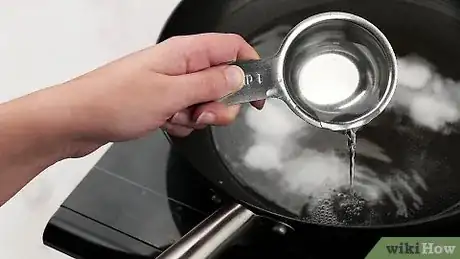


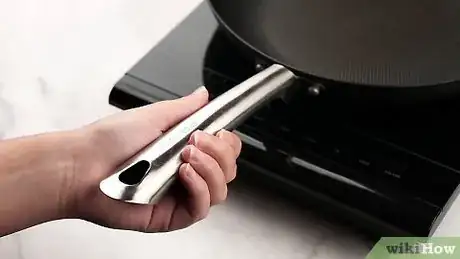
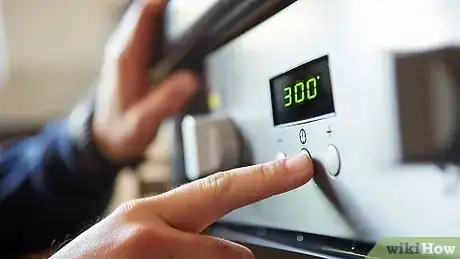
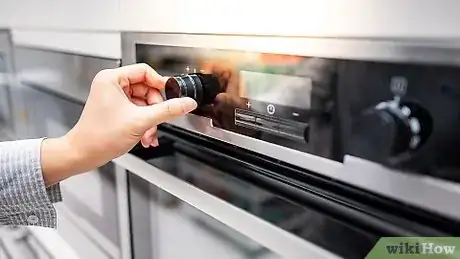
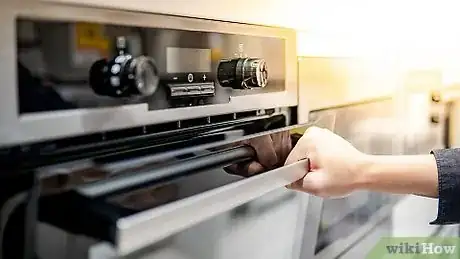
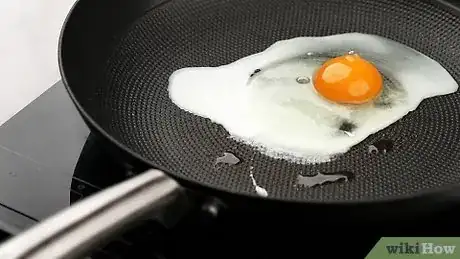

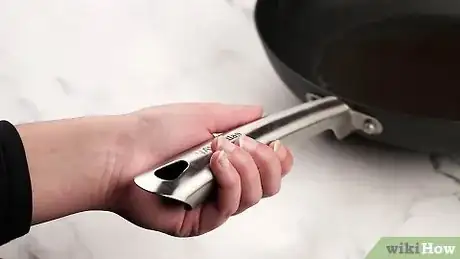
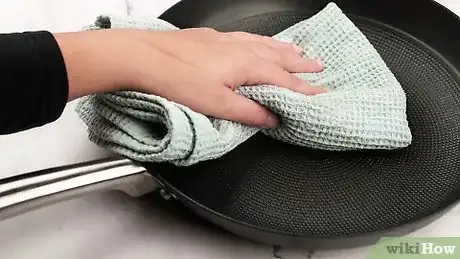
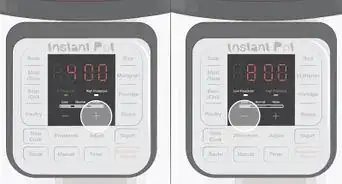
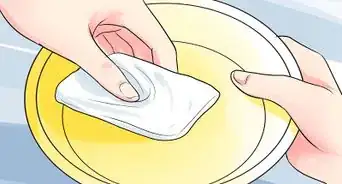

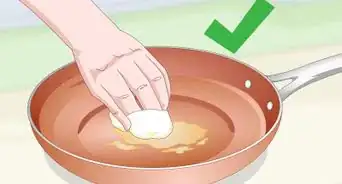
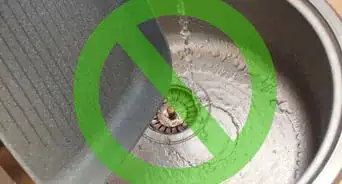
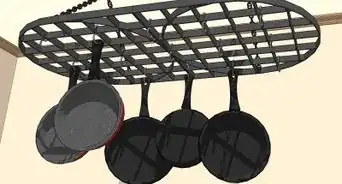
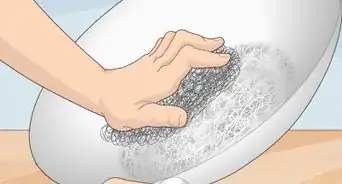









-Step-12-Version-2.webp)
